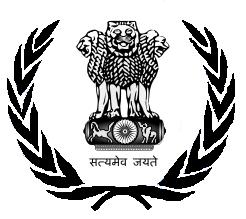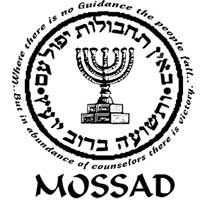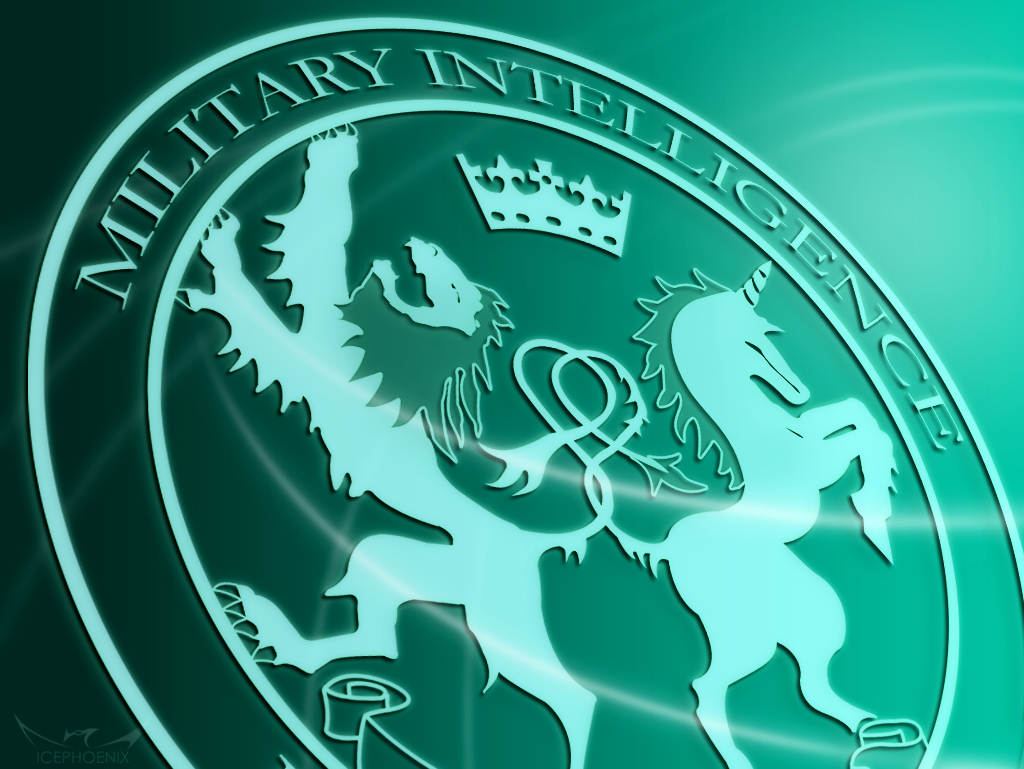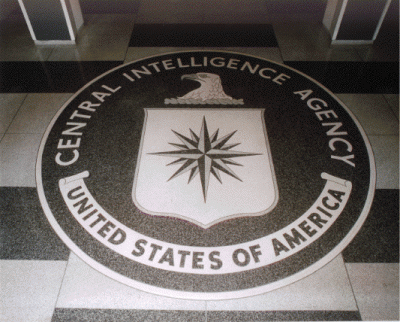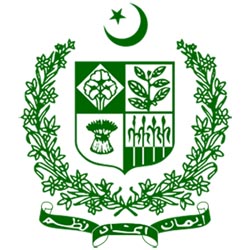The State of Jammu and Kashmir has been regarded as a heaven on earth, and is also called the bio-mass state of India. This area, located in the far north of the Indian republic, is a mountainous zone in the north-west Himalayas that shares international boundaries with Pakistan in the west, Chinese autonomous region of Xinjiang in the north and Tibet in the north-east. It is connected to the rest of the country through a 30 km long border with Punjab, and a 300 km long border with Himachal Pradesh. It has three main territories Jammu, Kashmir and Ladakh that differ in terms of climate, physiography, ethnic groups and culture.
The terrain of these states generally follows the south-east to north-west trend of the Himalayas, its foothills and its attendant ranges. In the extreme south, the great north Indian plain gives way at Jammu to the Shivaliks, the outermost foothill range, a belt of erosion-prone low upland.
The Kashmir valley, a fertile basin whose soil is formed of deposits laid down on the floor of the lake that once covered it, is bounded in the north by the Great Himalaya and separated from the plains of northern India by the Pir Panjal range. The highest peak of the whole of Kashmir is the Nanga Parbat, rising to 8114 m.
Ladakh lies athwart four major ranges the northern flank of the Great Himalayas, the Zanskar range, the Ladakh range with its subsidiary Pang-Gong range and the eastern Karakoram. Few of the summits of the Zanskar and the Ladakh ranges exceed 6,000 m, but the eastern Karakoram has a whole complex of peaks over 7,000 m high.
All the three regions experience different climatic patterns. Cold desert-like conditions prevail in Ladakh, and alpine, temperate and sub-tropical types in the rest of the state. In Ladakh, daily and seasonal temperature variations are quite wide with maximum summer temperature reaching as high as 30C and minimum winter temperature dipping as low as -50C. Rivers and streams may freeze for a few weeks in winter. The sub-tropical climate of Jammu is characterised by a very hot summer, and monsoon rains between June-August. January is the coldest month of the year though the temperature never touches zero. There is an abrupt rise in temperature during March, and the heat reaches 44C during June.
Bio-diversity
The state is rich in the cultural diversity of the people, as well as diversity of flora and fauna in the forest areas, and domesticated species outside the forest. Plant diversity is the life support of almost all terrestrial eco-systems, with both humans and animals being entirely dependent on plants directly or indirectly. The state of Jammu and Kashmir has a fairly rich diversity of plant life, and on this the people depend for their daily needs of food, medicine, fuel, fibre, etc. The varied plant life also contributes to the food and habitat needs of the wild and domesticated animals in the state. Plants are also an integral part of the social fabric of the state. The environmental, social and economic values of plants are very well known. On the other hand, the faunal component of the bio-diversity of the state is rich, with interesting and unique forms both in the forest zones and above the forest-line. The variety of animal forms ranges from higher groups like vertebrates, including mammals, birds, reptiles, amphibians, and lower groups like invertebrates including insects and even unicellular micro-organisms.
The flora
The flora of Himalayan Kashmir comprises about 3,054 species. About 880 species are found in Ladakh. The flora of the Jammu district comprises 506 species. These figures include only the angiosperms, gymnosperms and pteridophytes. The species lists of different districts are being continually updated in taxonomic publications. The lower plants like fungi and algae have not been studied exhaustively; information on the micro-flora of isolated regions is available for some plant orders and families only. The plants of the western Himalayas are well known for their medicinal properties.
This area is a storehouse of medicinal and aromatic plants, which are used in pharmaceutical and perfume industries. The list includes 55 species of important medicinal and aromatic plants. There are 11 medicinal plants in the temperate, cold, arid regions of Jammu and Kashmir. Several medicinal plants grow wild in the temperate and alpine habitats. Some native medicinal plants have been taken up for cultivation, e.g. Dioscorea deltoidea is now cultivated for its tubers which are rich in diosgenin and yield cortisone, a steroid hormone.
Phyto-geography and vegetation types
Within the Indian region, the area of Jammu and Kashmir is, phyto-geographically, the most complex and diverse. The flora has passed through various stages during the geo-morphological evolution of this region. This region has been colonised at different times by humid tropical Malayan forms, tropical African forms, temperate and alpine north Asiatic-European forms, sclerophyllous Mediterranean forms, temperate East Asian and semi-arid Central Asian forms. The rigorous environment has further acted upon this mosaic of geographical forms leading to the extinction of species, breaking up of distribution ranges, or induction of genetic variation with or without speciation. The flora of the surrounding regions has enriched the flora of Jammu and Kashmir. Floristically, the state of Jammu and Kashmir can be divided into three regions:
Alpine desert vegetation of Ladakh: The region is an almost treeless expanse. Due to the scarcity of precipitation the plants are generally found growing along moist river margins, or moist rock crevices. There are three main elements in the flora of Ladakh, viz. alpine, desertic and oasitic. A large proportion of the plant diversity exists in the cultivated state only. This includes crops like barley, wheat, gram, peas, lentil, onion, potato, etc.
Temperate vegetation of Kashmir: Though the vegetation of the Kashmir valley is disturbed due to extensive cultivation of grain crops like paddy and maize, one can see extremely rich vegetation in the beds and banks of the streams and canals.
The Kashmir valley abounds in lakes and swampy lagoons with distinctive hydro-phytic formations. The other Pir Panjal forests form a compact and linear strip-like area running from south-east to north-west and constitute the southern boundary of the Kashmir valley.
Sub-tropical vegetation of Jammu: The vegetation of the Jammu region is of a dry, mixed deciduous type. During the rainy season the low-lying areas become jheels that support a number of aquatic plants.
Aquatic vegetation
The high altitude lakes situated above 4,000 m in the Pir Panjal Range and in Ladakh are devoid of macro-phytic vegetation, whereas the lakes situated in the pine forest zone of the Pir Panjal and the Kashmir valley have well developed stratified vegetation. Most of the lakes of the Kashmir Himalayan range have typical zonation of plants. The innermost zone has submerged plants, which have their flowers and fruits above the water surface. In the shallower water there is a zone of plants that have their leaves floating on the surface of water. Along the lake margins, the plants stand in water with the greater portion of the plants being visible above water. Small free-floating plants occur in the shallow waters and along lake margins. Characteristic features of Kashmir lakes are the floating islands . These are strips of land artificially created and towed along from place to place. These floating islands are used for growing crops and horticultural plants.
Threatened plants
Many factors, both natural and man-made, have been responsible for extinction of species. It is well known that several plant species have become extinct due to certain natural phenomena, such as land upheavals, volcanic eruptions, glaciations, protracted periods of drought, spread of desert lands, forest fires and eutrophication in the geological past. In certain other cases species became too old or senescent and suffered genetic depletion, thus becoming unable to adapt to the new environment, leading to restricted distribution and, eventually, extinction.
Normally for a species the processes involved in its evolution, spread and finally extinction are very slow. While such natural processes in the past had no doubt led to the extinction of species, they had also contributed to the evolution and speciation of plants. Anthropogenic factors, on the other hand, have accelerated rarity and extinction of plants species to a level where the very existence of the eco-system is threatened.
The bio-diversity of the rich area of Kashmir happens to be one of the 26 hotpots in India where there are high rates of deforestation and endemicity. The whole Himalayan belt is one hotspot mega centre, having 8 critical areas, which include two regions from the state, viz. Ladakh and Kashmir.
The fauna
The fauna of Jammu and Kashmir is diverse due to its unique location and climatic condition. About 16% of the Indian mammals, birds, reptiles, amphibians and butterflies are presented in the state. Birds contribute much to the chordate diversity following by mammals, reptiles, fishes and amphibians. The state is home to about 75 species of mammals, besides several sub-species, belonging to 54 genera, 21 families and 8 orders. Carnivores represent 32% of the total mammalian fauna in the state. Of the 19 species of the ungulates reported from the state, 13 have been listed as globally threatened.
The avian diversity of the state varies seasonally and available data suggests the existence of as many as 358 species of birds belonging to 179 genera, 51 families under 16 orders. The state is home to 14 species of amphibians belonging to 6 genera, 5 families and 1 order, and 68 species of reptiles belonging to 43 genera, 12 families and 2 orders. The available data suggests that 44 species of fishes belonging to 14 genera under 5 families occur in the state. The available data also reveals that as many as 225 species of insects, besides several sub-species, belonging to 136 genera, 35 families and 4 orders occur in the state.
Conclusion
The economy of Jammu and Kashmir is essentially based on bio-mass. With a rich biological diversity, and a people that are traditionally dependent on bio-mass based resources, it is easy enough to see that the subsistence requirements of the people for food grains, firewood, fodder, timber for housing, food, milk and medicines are derived from the plant and animal resources available in the state. Even the industrial and commercial sectors have large inputs from the bio-mass resources of the state. The exports from Jammu and Kashmir, i.e. fresh and dry fruits, the famous saffron and honey, timber, resin, medicinal items, handicrafts, including artefacts carved from walnut wood, shawls, carpets, etc. are items obtained from the bio-mass produce of the state. Tourists who visit Jammu and Kashmir and contribute to the economy are attracted largely by the scenic natural beauty of the state with its mountain ranges, towering snow-clad peaks, placid sparking lakes, bubbling streams and springs.
However, the development of the country depends on the enhancement of bio-mass productivity through sustainable management of the natural resources that ensures that conservation of species, including the genetic variability within them, and eco-systems. As such, sustainable management of natural resources along with environmental conservation has to be an integral element of the development process. The natural resources of the state have, over the years, been subjected to serious depletion owing to various factors, stemming mostly from anthropogenic activities. As elsewhere in the country, both land and water resources in the state are beset with environmental problems. Deforestation, overgrazing, unsuitable agricultural practices, especially on sloping lands, strip the land of its natural cover/ vegetation, making the land vulnerable to soil erosion and loss of major soil nutrients. The adverse impact of such denudation and soil erosion in the Himalayan watershed/catchment areas is a matter of grave ecological concern. Management of land and water and environment in general is governed and facilitated by a set of policies/legislations that, if implemented properly and effectively, should support bio-diversity conservation and sustainable
The JK Medicinal Plants Introduction Centre Srinagar is responsible for development of 50 well known Medicinal/Fruit/Ornamental plants. JKMPIC one of the premier institution involved in production, development, introduction, & manufacturing of Medicinal, Fruit, Ornamental Plants and seeds.
Availability of Seed/Planting material
(The following seeds and planting material is available for distribution/purchase for growers only)
Planting materials : Saffron-Crocus sativus, Chinar- Platanus orientalis, Oak-Quercus robur, Malus communis, Prunus armeniaca, Prunus serotina, Cedrus deodar, Ginkgo biloba, Wild Cherry, Sweet Cherry, Sweet Appricort, Sweet Apple, Pear, Plum, Lukat, Peach, Almond, Walnut, Sweet Chestnut Cypress cashmiriana, Aesculus Hippocastanum, Sorbus cashmeriana, Cataegus oxyacantha Linn, Saussurea costus, Viola odorata Linn, Atropa belladona Linn, Urtica dioica Linn, Salix alba Linn, Geranium wallichianum, Amaranthus caudatus Linn, Allium victoralis Linn, Althaea officinalis Linn, Colchicum lutem, Crocus yellow, Iris ensata, Mallow-Malva Sylvestris.
Seed materials : Descurainea sophia, Banafasha-Viola odorata Linn, Aconitum heterophyllum, Achillea millefolium Linn, Rowan Kashmir-Sorbus cashmeriana, Milk Thistle- Silybum marianum, Cedrus deodar, Saw Palmetto, Atropa belladona Linn, Kuth- Saussurea costus , Ceratonia siliqua, Colchicum Luteum Bulbs, Saffron bulbs, Hawthorn-Cataegus oxyacantha Linn , Clary Sage, Ginkgo biloba, Sweet Chestnut, Cannabis cashmeriana, Mallow-Malva Sylvestris, Lavatera cashmiriana, Rosemerry-Rosmarinus officinalisetc, Red Hot Chili cashmeriana, Atropa belladonna, Aesculus Hippocastanum, Podophyllum Hexandrum, Pyrethrum Crysanthemum Cinerariae folium, Dutura Stramonium , Pear plant, Orange Cosmos, Shallot-Allium ascalonicum Linn, Garlic-Allium sativum, Iris ensata, Hyoscyamus niger Linn, etc. etc.








